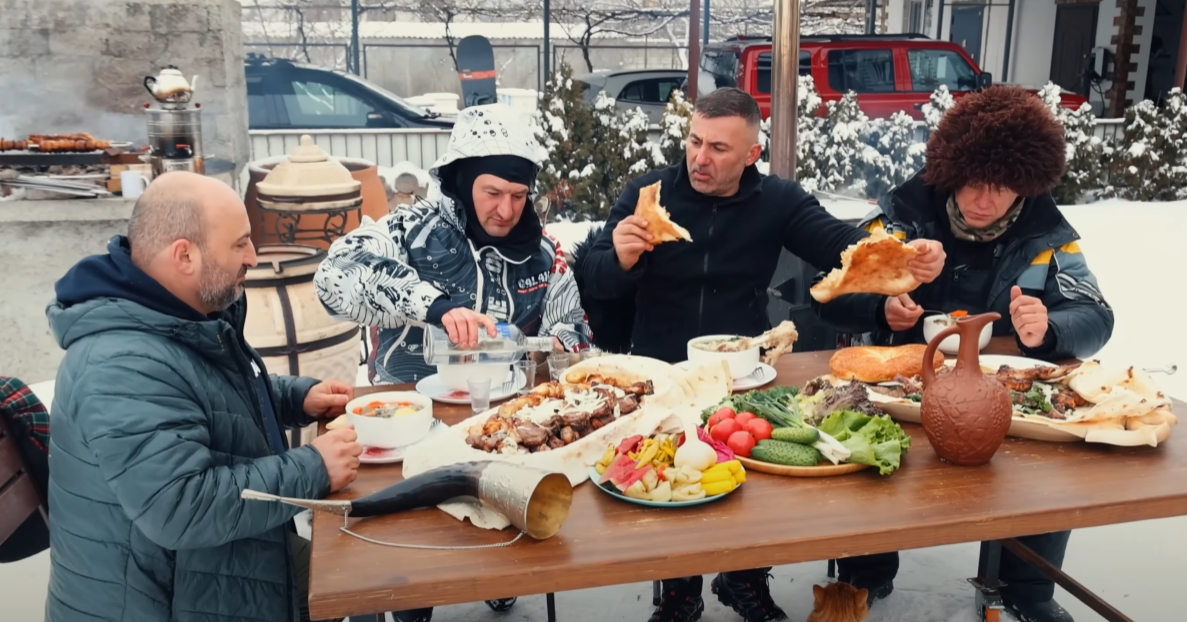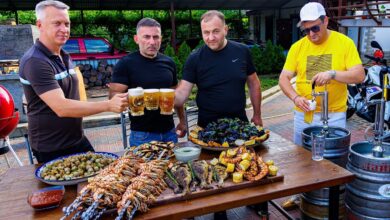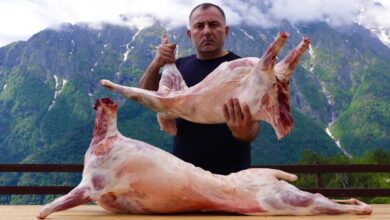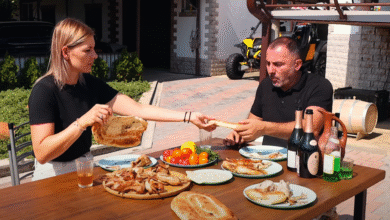“SHURPA” LAMB SOUP – GEORY KAVKAZ
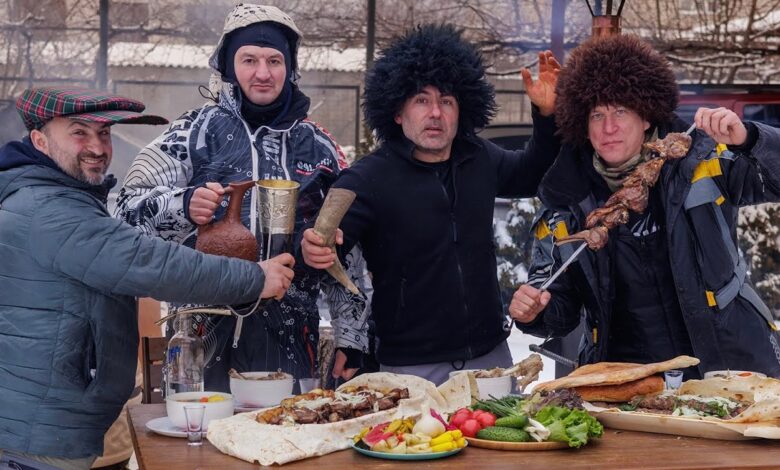
In a world driven by speed, where meals are often reduced to calories and convenience, there exists a dish that brings everything back to the basics: fire, water, meat, and time. This dish is Shurpa—a traditional lamb soup beloved across Central Asia, the Caucasus, and parts of the Middle East. But Shurpa is more than soup. It is comfort in a bowl, tradition passed down in whispers, and a testament to the power of simple, whole ingredients when treated with patience and respect.
In this article, we will not just cook Shurpa—we will live it, understanding every ingredient, every technique, and the emotional heritage behind this age-old culinary ritual.
1. What is Shurpa?
Shurpa (sometimes spelled Chorba or Shorba) is a broth-based soup made with lamb, vegetables, and aromatic spices. It is traditionally prepared outdoors in a cast-iron cauldron (kazan) over open fire, although it can be made indoors on a stovetop.
The hallmark of Shurpa is its clarity and depth of flavor. Unlike Western soups that rely heavily on sautéing or pre-roasting, Shurpa builds flavor slowly—meat and vegetables simmered gently, extracting every essence into a rich, golden broth.
The soup is not blended or thickened—it is clear, bold, and honest. Vegetables are left in large pieces, and the meat is bone-in, tender and aromatic.
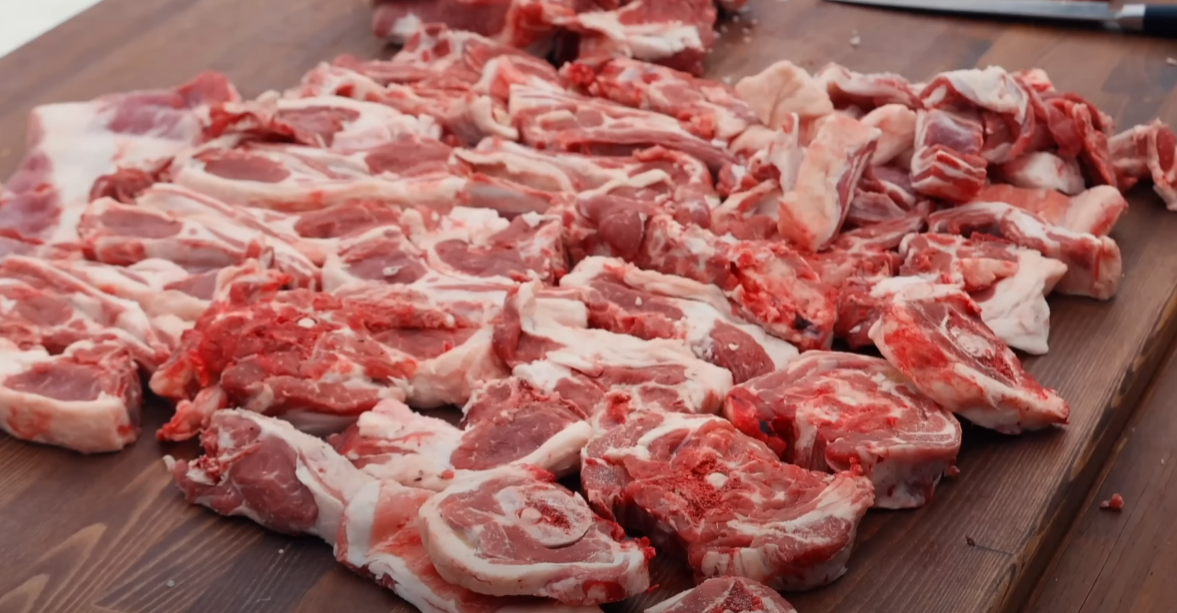
2. Ingredients (for 6–8 servings)
The ingredients below are based on traditional Caucasian Shurpa made with lamb. Adjust the quantities depending on your pot size and how strong you want the broth to be.
Meat & Stock:
- 2.5–3 kg bone-in lamb (shank, neck, ribs, shoulder, or a combination)
- 3 liters cold water
Vegetables:
- 5–6 medium onions, peeled and left whole or halved
- 5–6 medium carrots, peeled and halved or left whole
- 6–8 medium potatoes, peeled
- 2 large tomatoes, halved or quartered
- 2 sweet bell peppers, cut into large slices
- 1 bulb of garlic, halved horizontally (no need to peel each clove)
Spices & Herbs:
- 2–3 bay leaves
- 1 tablespoon whole black peppercorns
- 1 small dried chili pepper (optional)
- Salt, to taste
- Fresh parsley and dill, chopped (for garnish)
3. Equipment Needed
- A large cast-iron cauldron (kazan) or heavy-bottomed stockpot
- A long spoon or skimmer
- A wood fire (traditional method) or a gas stove
- A ladle and serving bowls
4. Step-by-Step Instructions
Step 1: Preparing the Lamb and Broth
- Rinse the lamb thoroughly under cold water, especially if it has bone fragments.
- Place the lamb in a large pot or kazan and cover it with cold water.
- Bring the water to a gentle boil over medium heat. This may take 20–30 minutes depending on heat source.
- As the water comes to a boil, skim off the foam that forms on the surface. This ensures a clear, clean broth.
- Once skimming is complete and the broth is simmering steadily, add the whole onions, carrots, peppercorns, and bay leaves.
Simmer uncovered for 1 to 1.5 hours. Do not let the broth boil too rapidly—this clouds the soup and toughens the meat. Keep the fire consistent and gentle, just enough for small bubbles to break the surface occasionally.
Step 2: Adding Vegetables and Aromatics
- Once the meat is almost tender, add the potatoes (peeled, whole or halved), bell peppers, and tomatoes.
- Add the halved garlic bulb (cut across its middle so the flavor infuses the broth).
- Add salt only at this stage, not earlier. Start with 1 tablespoon and adjust later.
- Let the soup simmer gently for another 45–60 minutes, until the potatoes are fork-tender and the meat is very soft, almost falling off the bone.
Step 3: Final Touch and Resting
- Taste the broth. Adjust the salt.
- Remove the cauldron or pot from heat and let it rest for 10–15 minutes before serving. This step allows the flavors to settle and deepen.
- Add freshly chopped dill and parsley to the soup just before serving or as a garnish in each bowl.
5. Serving the Shurpa
Traditionally, Shurpa is served in deep bowls, each one containing:
- A generous piece of meat (with bone)
- One or two chunks of potato and carrot
- A slice of bell pepper or tomato
- A ladleful of rich, clear broth
Serve with:
- Rustic bread, flatbread, or lavash
- Pickled vegetables or fresh onion slices on the side
- Optional: a small glass of vodka or tea, depending on the occasion
6. Cooking Tips and Secrets
Don’t Rush the Broth
The most important part of Shurpa is the broth. Do not try to hurry it. The lamb needs time to release its collagen, fat, and flavor slowly into the water.
Skimming Is Sacred
A cloudy soup is not a Shurpa. Keep your skimming spoon close during the first 30–40 minutes of cooking and remove all foam and residue.
Use Bone-In Cuts
Bones give structure and depth to the broth. Cuts like lamb neck, ribs, and shank are perfect.
Vegetables Must Be Large
Tiny diced vegetables disintegrate in long simmering. Keep them large so they hold shape and absorb the flavor of the soup.
Use Fresh Herbs Generously
Fresh dill and parsley are the most common herbs. They give the final flavor a brightness that balances the richness of the lamb.
7. Variations Across Regions
Shurpa is loved across a wide range of cultures, and every region has its own twist.
Uzbek Shurpa:
- Often includes cumin seeds and chickpeas
- Sometimes uses beef instead of lamb
Azerbaijani Shurpa:
- May include dried fruits like prunes or apricots
- Often served with a spoon of sour cream
Middle Eastern Chorba:
- May include lentils, rice, or spices like cinnamon and turmeric
Whatever the version, the spirit remains the same: a warm, rich, clear soup made with care and heart.
8. Cultural Significance of Shurpa
In Caucasian culture, Shurpa is not just a food—it is an act of hospitality. It is served to guests, family members returning from long journeys, or during gatherings where stories are shared around fire and wine.
Cooking Shurpa is also seen as a social act. It is often prepared outdoors in a big pot for community meals, weddings, funerals, or feasts.
The aroma of Shurpa simmering in a kazan is a signal that something sacred is happening: time is slowing down, people are gathering, and something nourishing is being born.
9. A Personal Reflection on Cooking Shurpa
To cook Shurpa for someone is to tell them: I care. It requires no fancy equipment, no restaurant training, just good ingredients, a steady fire, and time. Every step—washing the lamb, skimming the broth, slicing the vegetables—feels like meditation.
The first time I made Shurpa, I stood by the pot for hours. Not because it was difficult—but because I couldn’t leave it. The sound of the broth, the sight of the lamb gently dancing in the water, the scent of onions and garlic… It hypnotized me.
By the time it was ready, I didn’t want to eat it alone. I called a friend. We sat down. We shared silence. And we both felt healed.
That is the magic of Shurpa.
10. Closing Thoughts
In the modern world, many dishes try to impress with flair, innovation, and complexity. But Shurpa stands still—a calm, golden broth in a storm of trends. It doesn’t try to surprise. It simply delivers comfort, warmth, and a deep sense of belonging.
If you’ve never made soup from scratch before, start here. Let this be your first. Cook it for yourself. Cook it for your parents. Cook it on a rainy Sunday. Cook it when you’re tired of everything else.
And when you lift that first spoonful to your lips, close your eyes.
You’re not just eating a soup.
You’re drinking the memory of fire.



